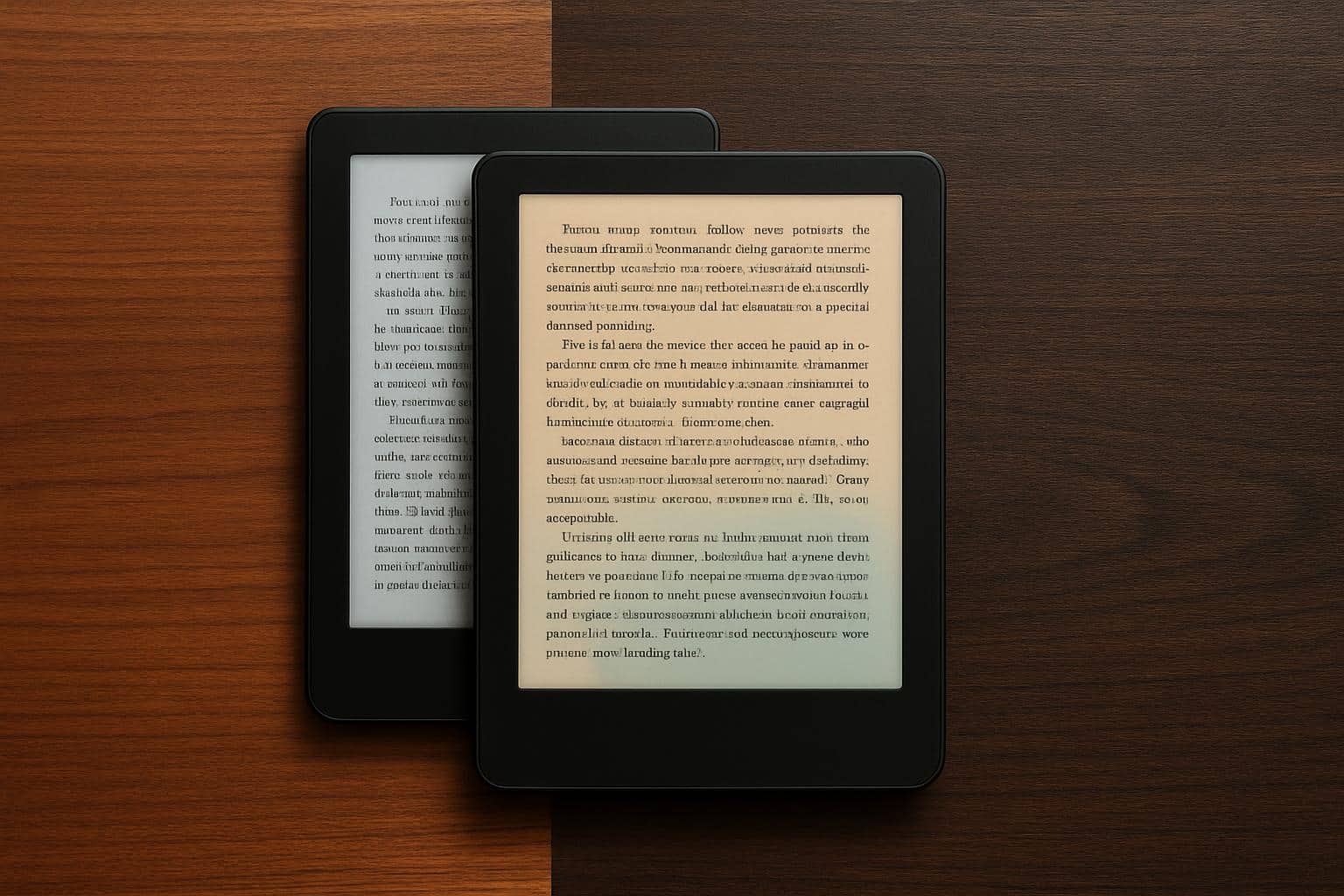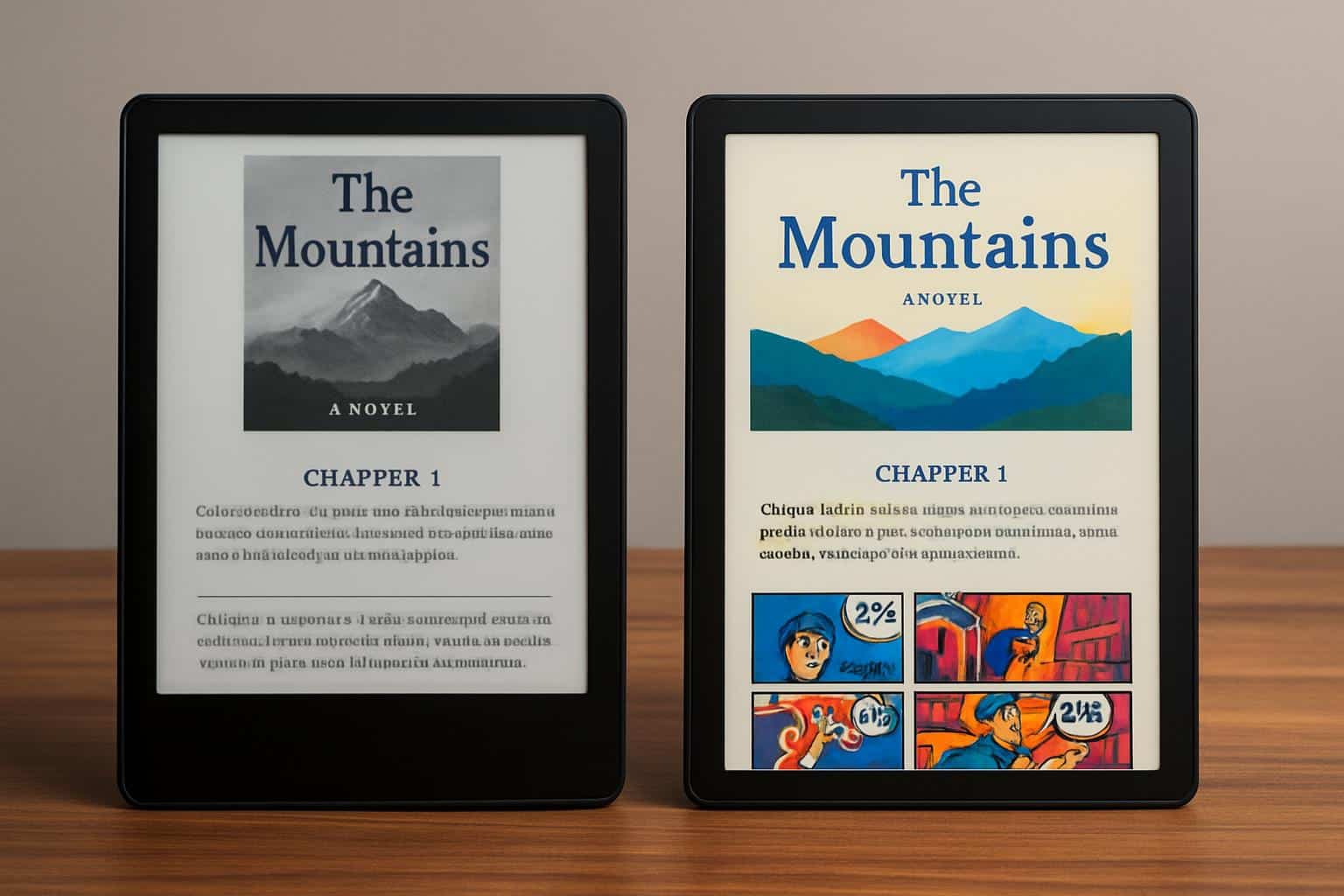Color e-ink is no longer a science experiment. Now it’s making its way to a broader array of devices, bringing richer book covers, cleaner color annotations, and comics that finally look like comics. The big question for die-hard readers is a simple one and can be incredibly polarizing: Is that splash of color worth it on an e-reader designed (read: hoped) to keep you planted there for long, uninterrupted stretches? We want your vote — and your rationale.
The Rise of Color E‑Ink on Today’s E‑Reader Devices
Recent models that use E Ink’s Kaleido 3 panels have brought color e-paper closer to the daily mainstream. That includes the PocketBook InkPad Color line and priority models like Kobo’s Libra Colour and Clara Colour, and Onyx Boox’s Note Air3 C and Tab Ultra C, all of which illustrate how far the tech has come: 4,096 colors, faster refresh rate, front lights that are warmer-looking. For graphic novels, manga, children’s books, travel guides, and cookbooks, it’s game-changing — panels, maps, and photos are just easier to read when they line up with the source.
- The Rise of Color E‑Ink on Today’s E‑Reader Devices
- What You Trade Off When Choosing a Color E‑Ink Screen
- Who Actually Benefits the Most From Color E‑Ink Devices
- What the Market and Research Say About Color E‑Ink Adoption
- How to Decide Between Monochrome and Color E‑Ink, as You Vote
- Vote in Our Poll and Explain Why Color Matters for You

Stylus-empowered models also get a working advantage. Color-coded highlights, marginalia, and mind maps are highly readable! Students and educators who breathe PDFs — as does anyone marking up text-dense documents — benefit from visual hierarchy that monochrome can’t replicate. That shift in workflow is also part of the reason that vendors selling note-taking slates have adopted color e-ink, alongside more traditional readers.
What You Trade Off When Choosing a Color E‑Ink Screen
Color e-ink still demands compromises. Text contrast might look a little softer than on a pure black-and-white screen because color on the Pure Color is produced through layers of the filter array over a monochrome panel. Kaleido 3 chugs out monochrome at 300 ppi, but color elements are at a lower effective resolution, so fine print and hairline graphics may be a touch more tentative.
Price and weight can also tick up. Now, color versions are more expensive than the monochrome version because they have that extra display layer and a bit beefier processor to handle refresh. Battery life is still measured in weeks for most e-readers, although color models can tax power supplies more when using a front light and higher refresh needs. None of this undermines e-ink’s central promise, but committed novel readers used to razor-sharp, paper-like text may feel grayscale still remains the benchmark — at least in bright sunlight where pure monochrome reigns supreme.
Who Actually Benefits the Most From Color E‑Ink Devices
If there is more prose on your library (or pile) of e-books — fiction, non-illustrated non-fiction and the like — then those monochrome Carta panels are still superb: sharp text type, minimal eye strain, and extended battery life. The change to color does nothing for a chapter of literary fiction, except that the cover may be slightly prettier on your home screen.
Color shines for visual content. Comic and manga readers receive more faithful art and better flow from panel to panel. STEM or medicine students can follow color-coded charts, diagrams, and annotations with greater precision. Multilingual readers benefit if dictionaries or school materials use color emphasis. Even if you’re not a prolific note-taker, color highlights can speed recall when skimming during revision. If you’re tossing out a notebook or marking up PDFs constantly, value becomes more concrete.

What the Market and Research Say About Color E‑Ink Adoption
Color e-paper remains a niche within a niche, but the momentum is there. The company’s own promotional materials highlight better color saturation and clarity compared to previous generations, closing the gap that previously made adoption prohibitive. Library and e-book engagement is also still serious business while climbing: OverDrive checked out more than 662 million digital books in 2023, another nod to continued demand for e-reading across genres.
Reader behavior hasn’t disappeared into tablets, either. Pew Research Center has consistently estimated that something like a third of U.S. adults read an e-book in the past year, and dedicated devices have kept their place alongside phones and tablets. Analysts point out that color e-paper devices are a case of a small base growing, not based on pure prose consumption but comics, education, and productivity users. In other words: Color feels less like a universal upgrade and more like a tool for targeting.
How to Decide Between Monochrome and Color E‑Ink, as You Vote
Audit your reading mix. If over 80% of your use is straight text, you might prefer monochrome if only for the extra sharpness and lower cost. If one substantial slice is comics, learning materials, magazines, cookbooks, or PDF markup? Color e-ink starts to make a bit more sense — especially on a device with stylus support and strong note-taking apps.
If you can, try them in person. Test text clarity, front light uniformity, and color saturation on your regular books. Make sure your library app, bookstore, or note system feels snappy enough on a color screen. Weeks of battery life and daylight readability continue to be the strong suit in either case, but it’s your content, not specs on a box, that is the decider.
Vote in Our Poll and Explain Why Color Matters for You
Now we want to hear from you. Are you after color screens for your e-reader, or is grayscale still good enough for what you read? Vote in the poll below and let us know in the comments what use cases are most important to you — the answers, we hope, will help tell just how much color e-ink is a need or a nice-to-have feature for the next generation of readers.

